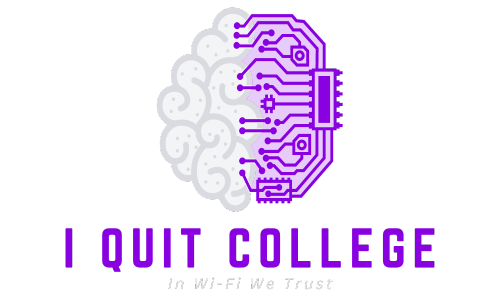Email marketing is a powerful strategy for small businesses to achieve growth and build lasting relationships with their customers. With an average ROI of $52 for every dollar spent in 2019, email marketing offers a high return on investment. It provides a wide reach, with approximately 3.9 billion email addresses worldwide, making it a popular marketing channel for 73% of consumers.
Successful email marketing involves building relationships, engaging subscribers, and personalizing content. By employing effective email marketing strategies, businesses can drive sales and nurture their customer base. Utilizing email campaigns, automation, and the right email marketing software, businesses can create impactful email campaigns that resonate with their target audience. Additionally, list building plays a crucial role in expanding the reach and impact of email marketing efforts.
Throughout this article, we will explore the benefits of email marketing, best practices for implementation, and key steps for planning and creating effective email campaigns.
Key Takeaways:
- Email marketing offers a high ROI and a wide reach
- Building relationships and personalizing content are essential for success
- Email campaigns, automation, and software are key components
- List building is crucial for expanding reach
- Stay tuned for more insights on email marketing strategies, tips, and best practices
The Benefits of Email Marketing
Email marketing offers several benefits for small businesses. It provides valuable data and analytics that can be used to measure the performance of email campaigns. Key metrics, such as opens, clicks, and engagement, can be easily tracked and analyzed. This data helps businesses understand their audience and improve future campaigns.
Email marketing also allows for personalized communication, providing a one-on-one connection with each individual customer. By segmenting email lists and targeting specific demographics, businesses can deliver relevant and tailored content to their subscribers.
Additionally, email marketing has a high conversion rate and can generate significant ROI when done effectively. By optimizing email content and design, businesses can improve their email conversion rate optimization and drive more sales.
| Email Marketing Benefits |
|---|
| Valuable data and analytics for performance measurement |
| Personalized communication with individual customers |
| Segmentation for targeted and tailored content delivery |
| High conversion rate for increased sales |
Best Practices for Email Marketing
Implementing best practices is crucial for successful email marketing campaigns. By following these guidelines, you can optimize your email campaigns and achieve better results:
- Make signing up easy: Add subscription forms throughout your website and offer incentives for sign-ups. This ensures that visitors can easily join your mailing list and stay connected with your brand.
- Vary your email content: Keep subscribers engaged by sending different types of emails such as newsletters, promotions, and event updates. This variety keeps your emails interesting and prevents your subscribers from getting bored.
- Segment your email lists: Divide your subscribers into smaller groups based on their interests, demographics, or purchasing behavior. This allows you to send more targeted and personalized emails, increasing engagement and click-through rates.
- Include a clear call to action (CTA): Every email you send should have a specific goal, whether it’s to make a purchase, sign up for an event, or visit your website. Make sure to include a clear and compelling CTA that encourages recipients to take the desired action.
- Avoid common mistakes: Poor subject lines, neglecting message previews, inconsistent sending, and neglecting mobile users are some common email marketing mistakes. Pay attention to these areas to ensure your email campaigns are effective.
- Choose the right email marketing service: Selecting a reliable email marketing service is crucial for simplifying the process and accessing necessary features for successful campaigns. Look for services that provide robust automation, personalization, and analytics capabilities.
By implementing these best practices, you can enhance your email marketing strategy and achieve better engagement and conversion rates. Follow these guidelines to make the most out of your email marketing efforts.
Planning and Creating Effective Email Campaigns
When starting email marketing for your small business, it’s crucial to plan and create effective email campaigns. This involves various steps, including choosing the right email marketing platform, building a targeted email list, and creating engaging email content. Let’s dive into each of these elements to help you maximize the impact of your email campaigns.
Choosing the Right Email Marketing Platform
To get started, you’ll need to select an email marketing platform that suits your specific needs. Consider platforms that offer features such as:
- Personalization: Customizing emails based on subscriber preferences and behavior.
- Custom branding: Ensuring your emails align with your brand identity.
- A/B testing: Experimenting with different email variations to optimize performance.
- Drag-and-drop design: Creating visually appealing emails without coding knowledge.
- Responsive design: Ensuring emails look great on all devices, including mobile.
By choosing the right platform, you’ll have the necessary tools to effectively execute your email marketing campaigns.
Building an Engaged Email List
Building a comprehensive and engaged email list is essential for successful email marketing. Here are some effective strategies to grow your list:
- Manually Collecting Contacts: Gather email addresses from customers, prospects, and industry connections.
- Adding Signup Forms: Place signup forms strategically on your website to encourage visitors to join your email list.
- Leveraging Social Media: Promote your email newsletter on social media platforms to attract subscribers.
Remember, quality trumps quantity when it comes to building your email list. Focus on attracting engaged subscribers who are genuinely interested in your offerings.
Planning Your Email Campaigns
Before launching your email campaigns, it’s crucial to have a clear plan in place. Consider the following steps:
- Set Goals: Determine what you want to achieve with your email campaigns, such as increasing sales or driving website traffic.
- Identify Target Audiences: Segment your email list based on factors like demographics, preferences, or purchase history.
- Choose Email Types: Decide on the types of emails you want to send, such as welcome emails, newsletters, promotions, or reminders.
By planning your campaigns, you can tailor your emails to specific segments and ensure they align with your overall business objectives.
Creating Effective Email Content
Creating compelling email content is essential to engage your subscribers and drive conversions. Keep the following tips in mind:
- Design Visually Appealing Emails: Use eye-catching visuals, consistent branding, and a clean layout to make your emails visually appealing.
- Craft Compelling Subject Lines: Grab your subscribers’ attention with concise and intriguing subject lines that entice them to open your emails.
- Deliver Clear Messaging: Clearly communicate the purpose and value of your email. Avoid cluttered content and focus on delivering a concise message.
- Include Engaging CTAs: Encourage recipients to take action by including clear and compelling call-to-action buttons or links in your emails.
By creating well-designed and engaging emails, you increase the chances of driving meaningful actions from your subscribers.
Remember, email platforms typically provide performance metrics that allow you to track and analyze the results of your campaigns. Use this data to make necessary improvements and optimize future email campaigns.
Conclusion
Email marketing offers small businesses a cost-effective and highly engaging marketing strategy for growth. By implementing best practices and utilizing the right email marketing platform, small businesses can effectively engage with their audience, drive sales, and build lasting customer relationships.
One of the key benefits of email marketing is its ability to provide personalized communication. With targeted messaging, businesses can deliver tailored content to their subscribers, ensuring relevance and increasing engagement. Additionally, email marketing allows for valuable data insights, providing businesses with the necessary information to measure the performance of their campaigns and make informed decisions.
To maximize the potential of email marketing, small businesses should follow a few essential tips. Implementing practices such as making email sign-ups easy and offering incentives for subscribers can help grow the email list. Varying email content, segmenting the audience, and including clear calls to action in each email are crucial for enhancing engagement and click-through rates. Choosing the right email marketing service is also vital, as it simplifies the process and provides access to essential features.
By continuously planning, creating, and analyzing email campaigns, small businesses can improve their marketing efforts. With visually appealing designs, compelling subject lines, and clear messaging, businesses can engage their audience and drive desired actions. Email marketing is a powerful tool that should not be overlooked in a small business’s marketing strategy, as it offers a cost-effective and impactful way to connect with customers and drive growth.
FAQ
What is email marketing?
Email marketing is the practice of sending targeted messages and promotional content to a group of individuals via email to engage with them, build relationships, and drive sales.
Why is email marketing important for small businesses?
Email marketing offers small businesses a cost-effective way to reach a large audience, build lasting customer relationships, and achieve growth by providing personalized communication, targeted messaging, and valuable data insights.
What are the benefits of email marketing for small businesses?
Email marketing provides valuable data and analytics, allows for personalized communication, has a high conversion rate, and offers a high return on investment (ROI) when done effectively.
What are some best practices for email marketing?
Best practices for email marketing include making it easy to sign up for emails, varying email content, segmenting email lists, including clear calls to action (CTA), and avoiding common mistakes such as poor subject lines and neglecting mobile users.
How do I start email marketing for my small business?
To start email marketing, choose the right email marketing platform, build an email list by collecting contact information, plan your email campaigns by setting goals and identifying target audiences, and create effective email content with visually appealing designs and engaging CTAs.






